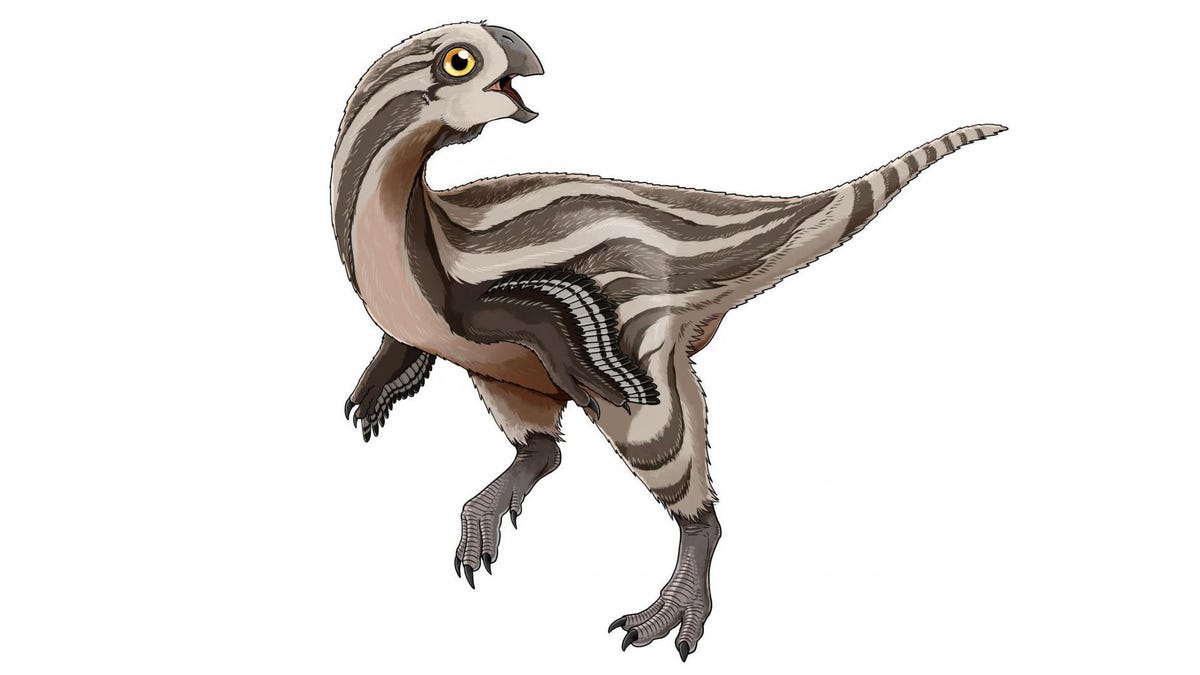Newly discovered dinosaur species is a tiny, adorable raptor
The species has figured out a way to open doors... to my heart.

An artist's rendering of Gobiraptor minutus
I could pinch the cheeks of this adorable new dinosaur and call it a Good Boy. Just look at it.
The image above is a rendering of the Gobiraptor minutus, a newly discovered species of oviraptorosaurs discovered in the Nemegt geological formation in Mongolia's Gobi desert. The site is rich with dinosaur fossils from the Late Cretaceous period around 70 million years ago, but this species appears to be distantly related to other oviraptorosaurs previously found at the site.
Oviraptorosaurs aren't quite the same as the door-opening "velociraptors" made famous by Jurassic Park. They have shortened skulls like those of a parrot and are relatively small (though one particular species grows to be about eight metres long). Oviraptorid fossils have mostly been found in Asia, though there are some records of fossils in North America and England, too.
The new find, published in PLOS ONE on Feb. 6, details the new species based on a number of skull, hip and tail bones. The delightful cherub's jaw bones are much thicker than other oviraptorids, suggesting that it may have had a particularly unique diet, feeding on seeds and ancient hard-shelled mollusks.
Notably, the specimen discovered by the international research team is likely to be very young, based on analysis of the dinosaur's thighbone. There are several instances in paleontology where young animals have been discovered and incorrectly classified as a new species, but the researchers suggest that the characteristics of the species are unlikely to be related to its stage of life because other oviraptoroids are precocial -- they have the same characteristics early in life as they do as adults.
The research team writes that the existence of yet another oviraptorosaur in the Nemegt Formation suggests that the creatures were one of the most "diverse and successful groups of dinosaurs" in the region.
The discovery follows another remarkable paleontological finding reported in Nature's Scientific Reports on Feb. 4, which discussed a new species of dinosaur with giant spikes protruding from its neck like a menacing porcupine lizard hybrid. The Bajadasaurus pronuspinax, as its known, is definitely not as adorable as the tiny Gobiraptor though.
NASA turns 60: The space agency has taken humanity farther than anyone else, and it has plans to go further.
Taking It to Extremes: Mix insane situations -- erupting volcanoes, nuclear meltdowns, 30-foot waves -- with everyday tech. Here's what happens.

